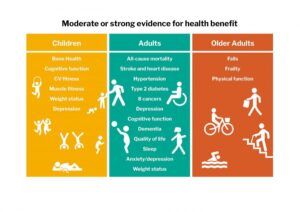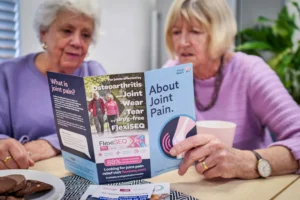Encouraging Phsyical Activity in the UK – What Role Can Brands Play?

We know regular exercise improves our physical and mental health.
Being active can help manage many long-term conditions and almost one in three people (32%) claim exercise improves their mental health, with over a quarter (27%) saying that exercise lifts their mood and helps them feel less anxious or depressed.
However, as we continue to struggle with rising costs, our outgoings are being reprioritised with immediate needs, like food and heating, taking precedent over those where the benefits aren’t obvious or immediately recognised.
Exercise, or a lack thereof, can take a while to take effect on body or mind. As a result, we’re seeing a marked decrease in physical activity amongst the general populace due to the costs associated with sport and fitness such as equipment, gym membership and travel.
As a result 76% of people do not currently reach the NHS recommendation of 150 minutes of moderate physical activity per week, with many stating cost as being a primary barrier.
What’s the issue?
The economic burden of physical inactivity is huge and the burden it places on healthcare services is becoming increasingly hard to weather.
Last year the World Health Organisation (WHO) estimated that almost 500 million people globally will develop heart disease, obesity, diabetes or other noncommunicable diseases (NCDs) attributable to physical inactivity, between 2020 and 2030.
In the UK 70% of healthcare expenditure is already spent on treating illness resulting from physical inactivity and it is a primary cause of most chronic diseases.
Unfortunately, our population is now around 20% less active than in the 1960s. If current trends continue, exacerbated by the current cost of living, it will be 35% less active by 2030.

Who is most affected?
It’s estimated that two thirds of adults have made changes to their, or their children’s sport and physical activity behaviours because of cost-of-living increases.
In fact, mental health charity, Mind, found that one in four people can no longer afford social activities, such as fitness classes or sport groups.
People from lower socio-economic backgrounds, disabled people and/or people with long-term health conditions are more likely to be impacted – always a common theme when it comes to the issues and trends we see in primary care.
Research from Sport England has shown these aforementioned groups are more likely to agree that cost-of-living increases are having a ‘negative impact’ on their ability to be physically active.
What can be done?
Whilst national policies to tackle NCDs and physical inactivity have increased in recent years, 28% of policies are reported to be not funded or implemented and only 1 in 2 countries ran a national communications campaign or mass participation physical activity event in the last two years.
One in four people would be more active if advised by a healthcare professional. This presents a unique opportunity and environment for brands and organisations wishing to support people to be more active.
Patient education materials (such as leaflets and posters in a GP waiting rooms) customised to address the unique needs and concerns of specific patients have shown promise in changing a range of health related behaviour.
Patients on low incomes
In a previous article we covered the issues patients on low incomes face and how they exacerbate pre-existing health issues and create new challenges.
Patients from low-income families tend to be heavy users of primary care, so any information on free or discounted trials at local clubs and gyms would be greatly received by them. You may even have an ‘at-home’ alternative such as a fitness app – which would help those poor on time as well as money.
Pre-school children, parents and their carers
1 in 5 children are overweight or obese when they begin school – and this age group also have amongst the highest visit rates of any age group to primary care.
From educational apps and children’s clubs to gym chains – there’s a space here to support your target customer by devising material aimed at this age group (access our guide on how to approach marketing material aimed at children) which in turn provides a whole family with a positive experience – increasing both brand loyalty and your pool of recommenders.
Mental health patients
90% of all mental health issues are dealt with in primary care alone and 2 in 5 appointments are to address mental health concerns (RCGP) but the health service is struggling to meet the complex demands of these patients. They need your help.
Physical activity isn’t just hitting the gym, walking around a National Trust park with a friend or practising yoga in your garden are all ways to improve health and increase social interactions. By positioning your product or service as additional support alongside NHS treatments could make a big difference to millions of patients.
+65 years
Did you know 1 in 3 over 65’s has had a serious fall in the past year? These falls not only affect future mobility but can also impact on confidence when being physically active again.
Could you provide pain relief or guidance on pain management to those with joint issues to ensure they can get back ‘on the saddle’? What about exercise tips to improve balance or suggestions on suitable footwear for additional stability?

Need more ideas?
Our team are experts in executing a range of campaigns in both primary and secondary care. From distributing pre-existing materials to devising a multi-touchpoint campaign aimed at patients and healthcare professionals – over the past 35 years we’ve done (and seen!) it all.
If you’re considering adding a healthcare environment into your marketing mix, please drop us a line or fill in our contact form and we can chat about options available to you in 2024.